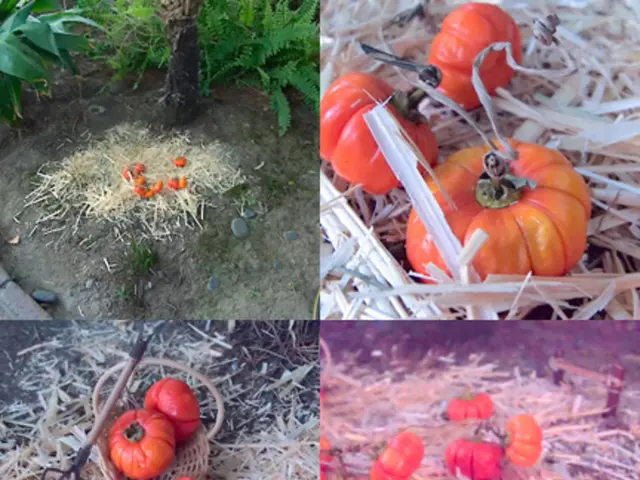Sweet Potato Harvest 101
Peak Flavor Harvesting Time for Sweet Potatoes
Getting your hands on sweet, delicious sweet potatoes requires a bit of patience and skill. They grow underground, which can make it challenging to know when they're ready to be pulled out. But don't worry, we've got some expert tips to help you out.
Ripeness Signs to Look For
- Yellowing Leaves: Observe the lower leaves for yellowing. This signals that your sweet potatoes are ready for harvesting.
- Mounding Soil: Gently move the foliage, and if you see a little mound, that's where the potatoes are forming.
- Drooping Stems: Stems that start to droop and turn yellow is another sign your sweet potatoes are reaching maturity.
- Neighbor Inspection: Find an outlier sweet potato to examine. This method can help you gauge when the others are ready to harvest.
Timing is Everything
- Planting Calendar: Most sweet potatoes take between 90 to 130 days to mature in the ground, so mark your calendar for a week to two weeks after each variety's recommended harvest date.
- Ideal Conditions: Consider adding a few days to your planting calendar, as it helps account for less-than-ideal conditions like drought, excessive rain, or lack of sun.
Harvesting Process
- Clear the Way: Remove the foliage for easier working space. This can be done using pruners or a lawnmower, depending on the size of your harvest.
- Mark the Crowns: Use sticks to mark your sweet potato crowns. Be careful not to skewer the tubers.
- Start at the Edges: Lift the soil at the edges of the patch first to minimize damage and ensure no potatoes are left behind.
- Dig Smart: Lift soil no more than 10 inches deep to avoid bruising or damaging the tubers.
- Take it Easy: Be patient and gentle during the harvest to avoid damaging the delicate tubers. Some experts suggest using your hands to avoid bruising them with tools.
Storing Sweet Potatoes
Curing sweet potatoes after harvesting is crucial for achieving the best possible flavor. This process involves high humidity and temperatures between 80 to 85 degrees Fahrenheit for about 7 to 10 days. After initial curing, store the tubers in a cooler location (55 to 60 degrees) for six to eight weeks. Throughout this period, remove and discard any poor quality tubers.
Common Mistakes
- Incorrect Soil: Sweet potatoes require a light, airy soil mixed with compost, to a depth of about a foot. The soil should be well-draining, but not too wet.
- Root Competition: To avoid disrupting the growth of your sweet potatoes, choose a spot for planting that isn't near the roots of trees or aggressive grapevine roots. Root competition can negatively impact tuber production.
By keeping an eye out for the signs of ripeness, understanding the growth cycle, and following the expert recommendations, you'll be able to enjoy your very own sweet, delicious homegrown sweet potatoes.
After harvesting your sweet potatoes, consider curing them for the best flavor by maintaining high humidity and temperatures between 80 to 85 degrees Fahrenheit for about 7 to 10 days. Later, store the tubers in a cooler location (55 to 60 degrees) for six to eight weeks, removing and discarding any poor quality tubers throughout this period. To enhance your vegetable garden, you may explore Martha Stewart's lifestyle ideas or delve into home-and-garden magazines for additional gardening tips and garden design inspiration.







